Growing green onions: the secrets of a good harvest
Growing green onions is a lucrative profitable business that can generate good income throughout the year. Plus, fresh herbs are a great addition to a family meal that shouldn't be passed up. Today, many farms are engaged in the cultivation of green onions on a feather, and it can be organized on almost any site.
Content
- Technology for growing onions in the open field
- Principles of growing onions in greenhouses
- The sequence of actions when planting onions in a greenhouse
- Growing green onions at home
- Growing green onions by seeds
Technology for growing onions in the open field
Without green onions not a single vegetable garden and not a single summer cottage do, since its cultivation does not require serious labor costs.
As a rule, pre-winter planting is used for this, in which the soil is prepared in the fall. It must first be loosened and fertilized: 1 bucket of manure, 30 grams of superphosphate fertilizers and 15 grams of potash fertilizers are taken per 1 square of area. The site needs to be leveled with a rake.
In the first half of October, even before the start of frost, the bulbs are planted:
- They need time to give roots, so you can not delay planting.
- It is important to take into account that the distance between the bulbs is at least 15 cm, otherwise they will be cramped.
- From above, the bulbs are covered with a layer of humus 2-4 cm thick.
- When the soil begins to freeze, the plantings are covered on top with a layer of manure with straw or peat.
- Warming will help them survive severe cold weather, since onions are not a very frost-resistant plant.
- When the snow begins to melt, that is, approximately at the beginning of April, the bed is cleaned of the covering layer, after which a greenhouse is placed on top of it.
In the future, planting and growing seedlings are watered as the soil dries, and periodically 1-2 times during the planting season they are fed with a small amount of nitrogenous fertilizer. The soil must be loosened periodically.to ensure a sufficient supply of oxygen to the plant roots. As a result, in early May it will be possible to harvest the first harvest of green feathers.
Also, onions in the open field can be grown from the beginning of spring, but then the seedlings will appear later, and the first crop can be harvested only at the beginning of June.
When the crop is harvested, the bulbs are shaken off the ground, the roots are cut off. From a square meter of plantings, you can get up to 15 kg of onions, this crop is almost always characterized by a high yield.
Principles of growing onions in greenhouses
Onions can also be grown in greenhouses in winter.
Green feathers have always been in demand, and greenhouse onions can be a good selling point.
As a rule, special varieties are chosen for such breeding:
- Troitsky.
- Bessonovsky.
- Spassky bow, etc.
For landing, you need to choose large enough bulbs, the diameter of which is at least 3 cm - otherwise the seedlings will be ugly and weak.
The seed should be stored in a dry place, the bulbs should not be damaged:
- Onions grow well in polycarbonate greenhouses, they help to store heat well and allow enough sunlight to pass through.
- It is best to use soil after planting eggplant, beets or tomato, since it will already be supplied with the necessary nutrients.
- To save space in the greenhouse, boxes with planting soil can be placed on racks.
- Multi-tiered cultivation will allow you to get a much larger yield, however, the distance between the two tiers should be at least half a meter.
- It is necessary to ensure that there are no cracks and drafts in the greenhouse.
- Usually they use gas heating for greenhouses, but sometimes stoves are also installed, which also provide enough heat.
- The temperature should not drop below 10-15 degrees, in this case the onion will give the fastest harvest, and it will be ready for sale only a month after planting.
It is important that the lighting in the greenhouse was located from above... If it is not possible to provide natural sunlight, you need to take care of the lamps. If the light falls from the side, the feather will tilt and the seedlings will be very confused.
The sequence of actions when planting onions in a greenhouse
The soil before planting you need:
- Loosen well.
- Manure and compost fertilizer are introduced into it.
- Also, a small amount of phosphates and potash fertilizers are applied to the soil.
Recommended before boarding wet the bulbs: if water gets under the outer shells, the seedlings will appear much faster.
- In addition, the top of the bulb is cut off.
- After the emergence of seedlings, you need to monitor the uniform moisture of the soil and periodically apply a small amount of nitrogen fertilizers.
- The onion feather begins to be harvested when it reaches a length of about 15 cm.
- Bulbs always germinate unevenly, so harvesting has to be done selectively.
The bulb is dug out, the stem is pulled out of it. It is cleaned and wrapped in film for sale. It is important to remember that if nitrogen fertilizers are applied to the soil, onions are stored less.
Experienced gardeners note that the best time to sell greenhouse green onions is the end of July, August and September.
At this time, ordinary gardeners have already sold off their crops, and most of them are busy with canning vegetables. For fresh herbs, the price rises, and you can get a good profit from it. The sale of greenhouse onions is recognized as a profitable business, since the harvest can be obtained almost all year round. To streamline the process, it is necessary to divide the greenhouse into zones, and after harvesting, the process is repeated.
Hydroponic cultivation of green onions is actively used in Europe.
In this case, the seed is planted in boxes with a small amount of soil and a lot of water. Nutrients are supplied to the roots in large quantities, so a good harvest can be achieved. The advantage of the method is also that you can place containers at any level and make the most of the greenhouse space.
Growing green onions at home
Green onions are a truly unique crop, as you can grow a great harvest on your own windowsill.
For forcing on the feather home is most often chosen Strigunkovsky, Bessonovsky, Danilovsky varieties, since they are multi-primordial and give a large number of shoots. To make the feather the same in size, the bulbs are sorted into small and large before planting.
How to plant green onions at home:
- Low boxes are used for planting.
- The thickness of the potting mix should be about 7-10 cm.
- It is better to choose enriched soil, which will contain the required amount of nutrients. You can buy it in a specialized store.
- The yellow husks are removed from the bulbs, in addition, the tops must be cut off. This will allow the sprouts to appear on the surface more quickly.
- The bulbs are planted with their bottom to the ground, while they do not need to be completely deepened into the ground.
- The distance between the bulbs should be about 2 cm.
- When shoots appear, and the leaves reach about 3 cm in height, it is recommended to take the boxes to the balcony for fresh air.
- The ideal air temperature for growing onions is 18-22 degrees, the water temperature is up to 25 degrees. Subject to the temperature regime, you can achieve strong green leaves.
- Fertilizer is usually applied to the soil 1 time, when the height of the greenery reaches about 4 cm. Complex mineral fertilizing is usually used: superphosphate, potassium chloride and ammonium nitrate.
- When the feather reaches approximately 25 cm, it can be cut.
- Usually, feathers are cut at the edges first, as they will grow further from the center of the bulb.
Grown greens can usually be harvested within a month.
If you want to always have fresh herbs in the house, you can plant green onions in 2 boxes, the interval between plantings is 20-25 days. In this case, when the crop is harvested on the first bed, green shoots will just begin to appear on the second. The first container can be freed from the waste soil and the bulbs can be planted again.
Growing green onions by seeds
There is another way to grow onions on a feather - planting with seeds.
It is slightly more time consuming than growing with bulbshowever, this method also allows you to get a good harvest. Onion seeds are cheap and are usually planted from late summer to harvest by spring.
- Before planting, the seeds are soaked for 2-3 days so that they have time to "hatch".
- The soil is thoroughly loosened before planting, a complex of organic fertilizers is introduced into it, after which the bed must be leveled.
- Seeds are sown in rows, row spacing is about 30 cm.
- After the emergence of seedlings, the bed is thinned out.
- In October, when the first frosts begin, the garden bed is covered with a layer of peat or straw to protect it from freezing.
- With the beginning of spring, after the snow has melted, the overwintered seedlings are opened, and then they are looked after as for ordinary garden plants: drying out or waterlogging of the soil must not be lowered, the bed is periodically loosened to ensure the flow of air.
- The feather is cut when it reaches a height of 25 cm or more.
Planting onions with seeds guarantees fresh greens in early spring, when other gardeners are just beginning to sprout.
Chives in general are an undemanding plant that grows well even in fairly poor soils. However, if you take care of the plantings, they will delight you with an excellent harvest, which will not only become an excellent vitamin supplement to the table, but also bring a good profit. This is an amazing plant that can be grown both in a greenhouse and in the garden bed, and at home on the windowsill. Under the right conditions, green onions grow quickly, and the seedlings will turn out to be beautiful and tasty.
More information can be found in the video.




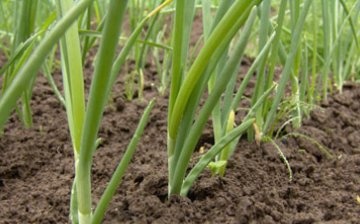
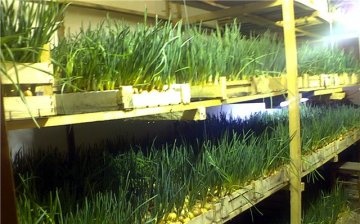
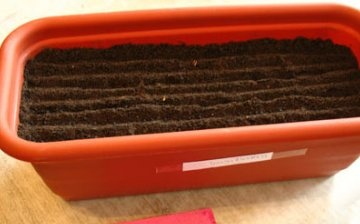
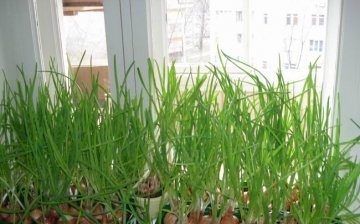
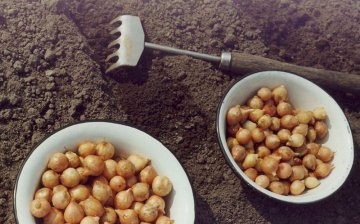






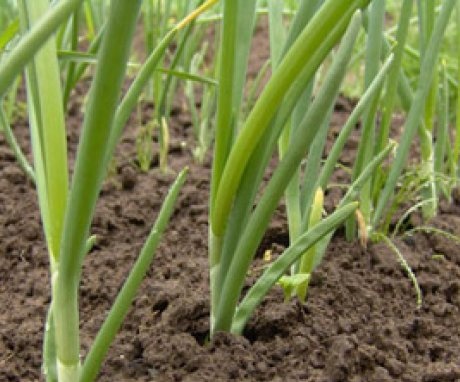
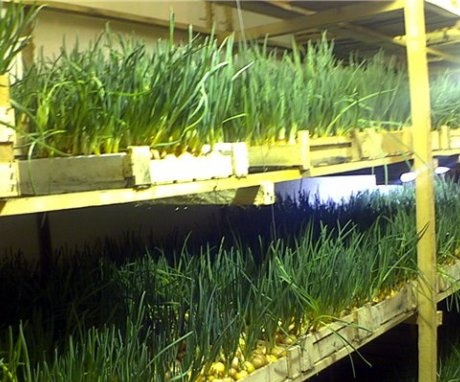
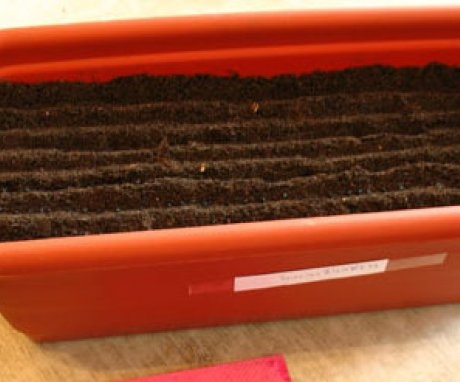
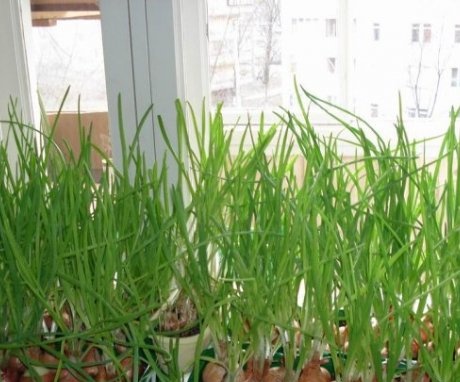
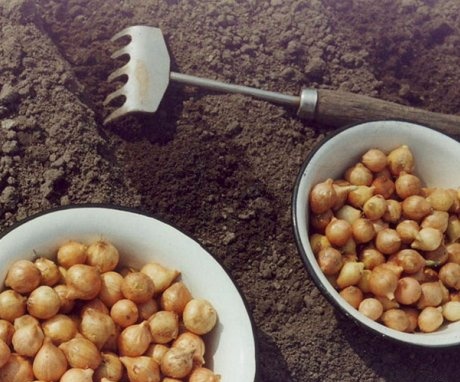
A truly all-season product. And easy to reproduce. An interesting nuance about cutting off the top of the bulb when planting.
I do not know what is the reason, this year our green onions in our summer cottage have turned yellow. They planted it in a new place, now in thought, maybe the soil lacks minerals or the reason is something else.
Green onions can be grown on a windowsill even for those who have no experience in growing vegetables at all. My grandmother does not remain without green onions in winter, because she always has several sprouted bulbs on her windowsill.
I did not know what is more comfortable onion after the soil after planting eggplants, beets and tomatoes. This year we will try to do so, let's see what happens. And I was very surprised that the top of the bulb needs to be cut off when planting.